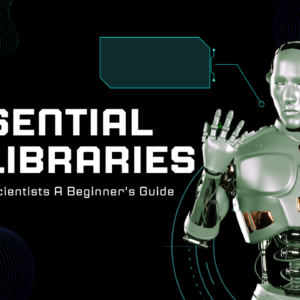Imagine a map that learns with you, adapting to your preferences and helping you discover new places effortlessly. With the rise of generative AI, this dream is becoming a reality in the world of navigation. In this blog post, we’ll explore how generative AI enhances map functionality, making it easier and more enjoyable to explore the world around us. Whether you’re a tech enthusiast or just someone looking to navigate your city better, there’s something here for everyone!
How to Use AI in Maps?
Using AI in maps is all about enhancing user experience and providing personalized recommendations. Here’s how you can leverage these advancements:
- Voice Commands: Simply ask your map app questions like “What are the best restaurants nearby?” or “Show me parks for kids.” The app’s AI will interpret your request and provide tailored suggestions.
- Smart Suggestions: Generative AI analyzes your past behavior and preferences to suggest places you might like. For example, if you often visit coffee shops, it might recommend a new café that fits your style.
- Real-Time Updates: AI can process vast amounts of data in real-time, allowing maps to provide live traffic updates, reroute you around congestion, and even suggest alternative routes based on current conditions.
These features not only make navigation easier but also turn your map into a personalized travel companion.
Does Google Maps Use Generative AI?
Absolutely! Google Maps has been integrating generative AI into its platform to enhance user experiences significantly. Recently, Google introduced features powered by its Gemini model, which allows users to ask questions about places and receive curated suggestions based on real-time data from its extensive database of over 250 million locations.
For instance, if you’re planning a night out and ask Google Maps for “fun things to do tonight,” it can suggest activities tailored to your interests, such as live music venues or trendy restaurants. This capability makes exploring new areas much more engaging and less stressful.
What Are the Recent Developments in Generative AI?
Generative AI is evolving rapidly, with several exciting developments on the horizon:
- Enhanced Natural Language Processing: New models are becoming better at understanding context and nuance in user queries. This means more accurate responses that feel conversational.
- Integration into Diverse Applications: Beyond maps, generative AI is being used in various fields such as healthcare for diagnostics, finance for risk assessment, and even creative industries for content generation.
- Real-Time Data Utilization: Companies are leveraging real-time data streams to improve the accuracy of predictions and recommendations. For example, Google Maps now uses real-time traffic data to suggest the fastest routes dynamically.
These advancements are not just technological feats they are reshaping how we interact with digital tools daily.
How Does Generative AI Improve User Experience in Maps?
Generative AI significantly enhances user experience in several ways:
- Personalized Recommendations: By analyzing user preferences and behaviors, generative AI can suggest places that align with individual tastes whether you’re looking for family-friendly activities or hidden gems off the beaten path.
- Interactive Exploration: Users can engage in a back-and-forth dialogue with their maps. For instance, if you ask about outdoor activities suitable for kids, the map can provide tailored suggestions based on your location.
- Visual Enhancements: Generative AI can create immersive visual experiences by generating 3D models of locations or providing augmented reality overlays that enrich navigation.
These improvements make using maps not just functional but also enjoyable—turning mundane trips into exciting adventures!
In Which Countries Can You Use Generative AI in Maps?
While generative AI features are expanding rapidly, they are not yet available everywhere. Currently, Google Maps’ advanced features powered by generative AI are primarily rolling out in:
- United States: The latest updates are being introduced here first, allowing users to access enhanced navigation features and personalized recommendations through conversational prompts.
- European Countries: Features like the Immersive View are expanding to cities such as Brussels and Frankfurt. However, full generative capabilities may vary by specific country within Europe.
- Asia-Pacific Regions: Some features are becoming available in countries like Japan and Australia but may be limited compared to those offered in the U.S.
Google continues to work on improving international coverage for its mapping services. As these technologies develop further, we can expect broader availability across more regions worldwide.
Conclusion
Generative AI is revolutionizing how we interact with maps and discover new places. From personalized recommendations that cater to our unique preferences to real-time traffic predictions that keep us moving smoothly through our cities, these advancements are making navigation more intuitive than ever before.
As we continue to embrace these technologies, it’s clear that our journeys whether daily commutes or adventurous explorations will be enriched by the power of generative AI. So next time you pull up your map app, remember that it’s not just a tool it’s your personal guide ready to help you explore the world!












